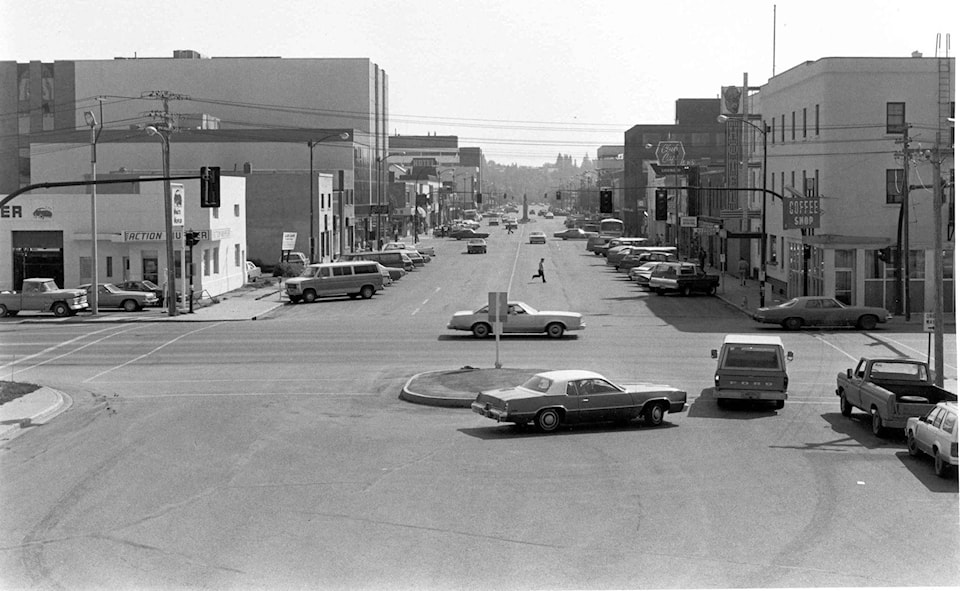Forty years ago, in September 1979, an energetic young man was hired as Red Deer’s first full-time archivist.
As many people know, 40 is the ancient Hebrew/biblical way of saying something has lasted a very long time, or is “beyond count.”
When one considers how much Red Deer has changed since I began my career as an archivist, one can really tell 40 years is indeed a very long time ago, and the number of years are almost “beyond count.”
Red Deer’s population was 39,740 in 1979, instead of 101,000, as it is today.
That was a big jump from the population of 26,907 recorded at the start of the 1970s.
The 1970s had generally been years of strong growth and prosperity. In 1974, the Organization of Petroleum Exporting Countries decided to flex its economic muscle and impose major increases in the price of oil.
While the move brought a lot of hardship across North America, Alberta, as a major oil-producing region, experienced a sudden avalanche of wealth.
The boom got even stronger with the construction of a $375-million world-scale ethylene plant at Joffre. When the new plant was completed in October 1979, plans were announced a second major plant would be constructed. It seemed the great boom would continue for a long time to come.
New subdivisions sprang up in such areas as the Pines, Glendale, Highland Green, Normandeau, Morrisroe Extension, West Park South and Clearview Meadows. The geographical balance of the city shifted.
By 1979, more than one-third of the city’s residents lived north of the Red Deer River, up from less than one-fifth a decade before.
The growing importance of north Red Deer was reflected in the construction of the G.H. Dawe Community Centre. The first phase, which mainly consisted of the G.H. Dawe Community School, was completed in 1977.
The second phase, which included a swimming pool, was completed in 1980. There were also plans to build a separate school district school (St. Patrick’s), as well as an arena and public library as a further extension to the complex.
The Parkland Mall, which had dominated the brow of the North Hill since 1970, had doubled in size. It included an impressive Sears store. There were serious plans to build a second large mall in the proposed new subdivision of Bower Place on Red Deer’s south side.
The downtown skyline had been changing dramatically. Multi-storey office complexes were constructed, such as the Provincial Building on 51st Street, the 5010 Professional Centre along Gaetz Avenue, and the six-storey Parkland Square building on 48th Street.
There were new public facilities, with the most important one being the construction of the Red Deer Regional Hospital. It was urgently needed, as the occupancy rates in the existing hospital had sometimes hit an astonishing 140 per cent.
Once finished in 1981, this six-storey regional health centre was to provide the booming city and region with nearly 400 acute care beds, an 18-bed intensive care unit and a large emergency department, as well as a range of specialized and advanced health services.
The great boom also helped to engender a fair bit of drama in civic affairs. The mayor, Ken Curle, who had been elected in 1977, prided himself as being “a true maverick.”
One New Year’s Eve, he even showed up at a party on horseback dressed as a white knight.
He often took a confrontational approach to the debate over such issues as the proposed relocation of the exhibition grounds on the south side of Red Deer. Two city councillors teamed up to try and force a new direction for the city.
The result was very acrimonious debates at city council meetings. The debates became so heated, the local cable TV station reported a huge increase in its audience.
Things cooled down quite a bit with the civic elections of 1980. The new mayor, Bob McGhee, ran a successful campaign with few promises, other than to restore a more business-like approach to running the city.
There were also some signs the boom might be cooling as well. The amount of annual building permits dropped from more than $100 million to something in the mid-$90 million range. Things were less boisterous, but there were some very challenging times ahead.
Red Deer historian Michael Dawe’s column appears Wednesdays.
